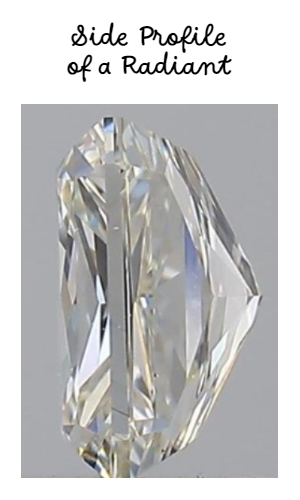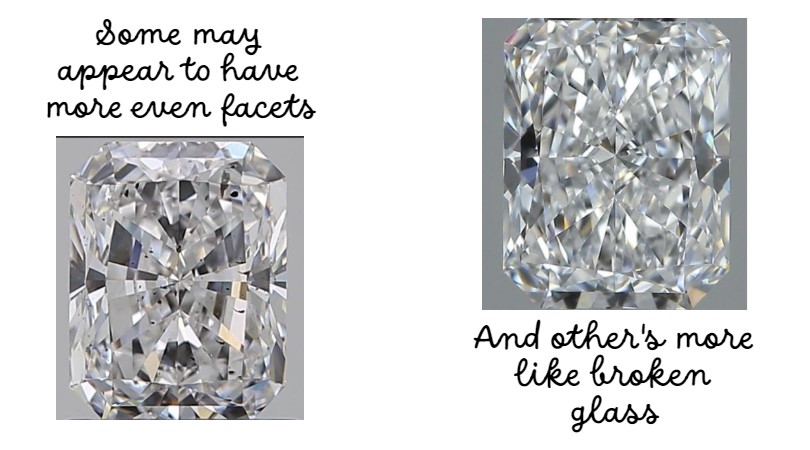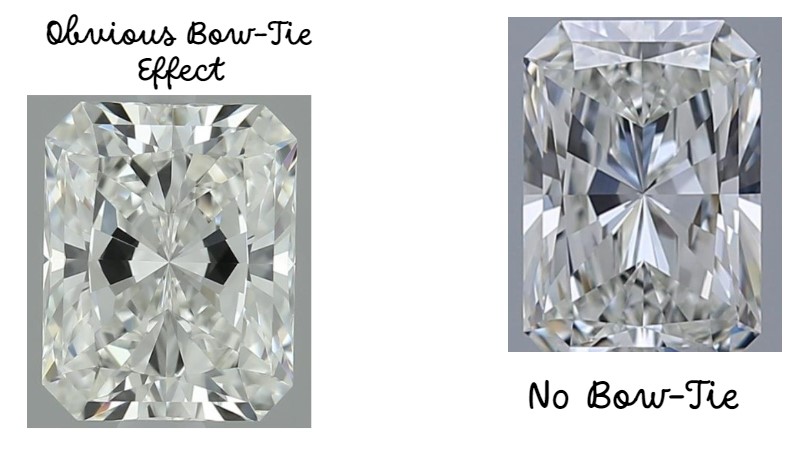Positively Radiant! A Guide to Radiant Cut Diamonds | Rare Carat
As the name suggests, this diamond cut has got it all - great display of fire, brilliance, all wrapped up in a glam square to rectangle shape. With the flashes of color and refraction, It’s easy to get lost in the mesmerizing array of facets. The Radiant cut mixes the long, clean chiseled lines of an emerald and the fiery flashing facets of a round brilliant diamond. It’s definitely eye-catching, and definitely radiant!
History of the Radiant
Okay, story time! Once upon a time there was a gentleman by the name of Henry Grossbard, he came to the United States from Austria during World War 2. Once safely in the US, he apprenticed as a diamantaire. He admired the long elegant lines of the emerald cut but customers were starting to become unimpressed with the lack of brilliance and fire it offered. So in 1976 he created the Radiant cut diamond, and in 1980 perfected it to what we know today. Combining the elongated shape of the Emerald and the sparkling facet pattern of the round brilliant. And he surely succeeded in his endeavor. There were no other diamond cuts other than round that could offer this brilliance. This put the cutting world into a frenzy, giving inspiration to other cuts like the cushion, princess and Asscher diamond cut.

So, back to the low down on Radiant cut diamonds!
These little beauties, as we said before, are anywhere between square to rectangular, with these classic cut's somewhere right in the middle. On the outside, they resemble the emerald cut, with lopped-off corners, and have 70 facets to create the amazing brilliance to dazzle your eye. That's an extravagant amount of facets, when you think about how the classic round brilliant only has 58.
Don't forget the 4C's
As always, when searching for a diamond of any shape you have to remember the 4C’s - cut, clarity, color and carat. These alliterating words refer to how well (symmetry, clean and even) the facets and general shape of the diamond is, how many inclusions (imperfections internally) there are, how white to brownish-yellow the hue is, and the size of the diamond of course.
Usually, when buying a diamond you want the least included grade possible. However, with this cut, all the facets help hide some of these internal imperfections, which means you can save some money and a headache searching for a flawless stone, and find one that's lower on the grading scale and still have it look great. Here are some examples of these cuts that are all SI2, which is usually considered not the best grade, but here it's pretty hard to tell what is imperfect about them.

Radiants are also quite sturdy little things. The cut requires more weight in the bottom of the stone to create the facet pattern, meaning it is going to be less prone to fracturing if the top is whacked against something (we all do it… it's okay). Since the corners are cropped, this adds an extra level of safety because this means there are no pointy corners to get chipped or broken.

Different Radiant Facet Patterns
While you’re searching you’ll find that these cuts are a little different than others- they sometimes can look a little like broken glass internally, which gives them a more unique look. Some people may prefer the more even and precise facets of an emerald or princess cut, this cut has a ton (technically, in this case, 12 is a ton FYI) more facets which equals a little bit of a good- but muddled- mess of refractions. You’re going to have some facets that are clean and angled, and others that sort of blend together to form an array of glitzy goodness.

Stay Away from the Dreaded Bow Tie
Another effect to watch out for is called the bow-tie effect. This is caused by there being fewer facets in the middle of the stone than on the ends, which gives a shadow that looks like two triangles pointy end together. While this isn’t the end of the world, you’ll have a lot less refraction in this area and it can be distracting. The radiant was made to shine, we don’t want anything taking away from that!

So there you have it. The in’s and out’s of the fantastic Radiant diamond. Hopefully, you’ve learned a little about this great mash-up and if you want to take a gander yourself, head on over to our amazing search engine and explore yourself!

